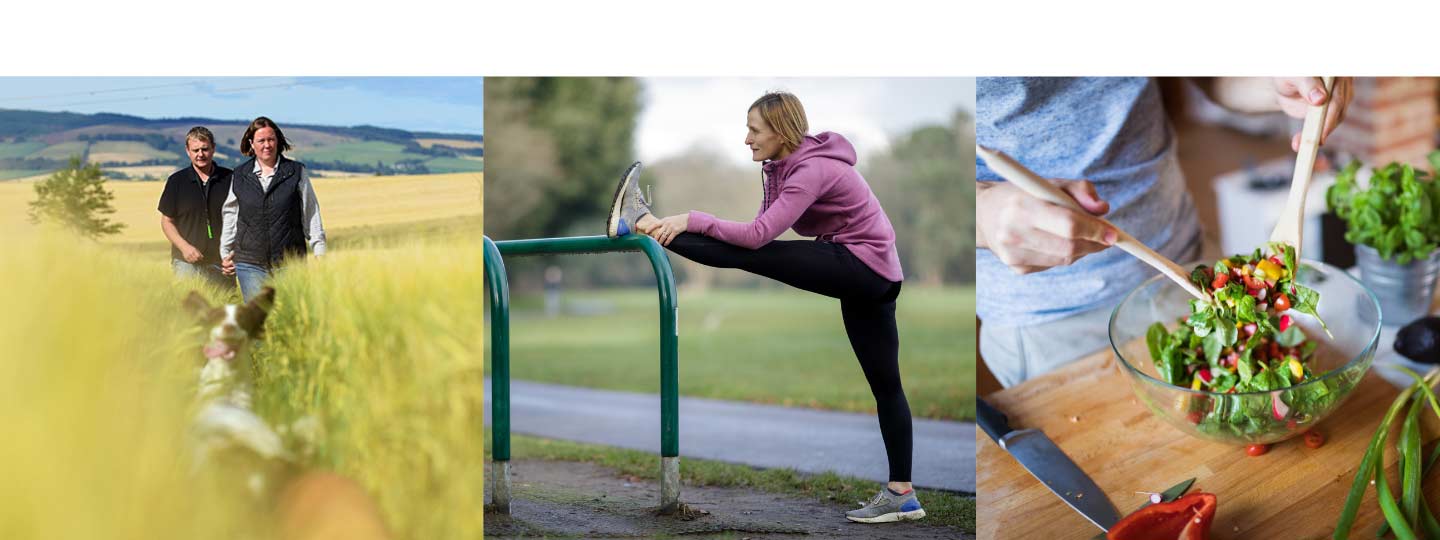Top tips to help knee pain
01 April 2021
Our knees have to support most of our weight while at the same time allowing us to walk, climb stairs and bend down – so it’s not surprising that they sometimes cause us problems.
Fortunately, there are treatments, techniques and exercises which can help you manage your knee pain. It’s all about finding what works for you, as we are all different.
If you do have a longer-term problem such as osteoarthritis of the knee or you are waiting for knee surgery, always listen to your body and do what is right for you.
Here’s our top tips to help you manage knee pain:
1. Keep moving
Try to keep active as much as you can, too much rest can cause the muscles that support your knee to become weak, which can lead to longer-term problems.
Try to avoid activities that put a lot of strain on your knee – such as kneeling or standing still for long periods of time.
Remember, if you are new to exercise start slowly and build up gradually.
Let’s Move is our online programme for people who want more movement in their lives. Sign up today, and we’ll be there to support you every step of the way. This video shows how to safely get up and down from the floor.
Let's Move with Leon
If you have a job that involves sitting for much of the day, try to move your knees for 10–20 seconds at least every hour.
You could try some specific exercises for your knees. Some of these movements can be done while sitting or lying down and will help avoid stiffness, as well as helping to keep up your muscle strength.
Cycling, swimming, aqua-walking and walking are good low-impact exercises for the knees.
When walking, make sure you wear comfortable shoes with a thick sole, which will act like shock absorbers. And avoid wearing high heels as these can put a lot of strain on your knees as well as your feet and ankles, hips and even your back.
Read how stretching and strengthening exercise can be beneficial.
2. Simple treatments
To help ease pain and stiffness try using heat and / or ice packs:
- a hot water bottle or a microwaveable wheat bag placed on your knee can ease pain and stiffness
- applying ice may be more helpful if the knee is swollen. A pack of frozen peas wrapped in a damp towel (to protect your skin) can work
- alternating between ice and heat throughout the day may also help.
Read more about managing your pain.
Taking painkillers such as paracetamol and non-steroidal anti-inflammatory drugs (NSAIDs) such as ibuprofen can help with pain. These are available very cheaply from pharmacies and supermarkets without a prescription.
Alternatively, there are NSAID creams and gels available that you can apply directly to the joint. You may want to try these first, especially if tablets tend to upset your stomach.
Read more about painkillers and NSAIDs.
3. Keep to a healthy weight
Staying at a healthy weight is especially important if you’ve ever had knee pain. If you’re overweight, losing even a few pounds can make a big difference to the strain on your knees.
We’d recommend a healthy, balanced and nutritious diet that’s low in fat, sugar and salt – but with plenty of fresh fruit and vegetables.
Find out more about eating well with arthritis.
4. Help around the house
When going upstairs, lead with your good leg. When going downstairs lead with your painful leg. In both cases, use the handrail. If there’s no handrail, try to steady yourself by placing your hand against the wall.
Get a shower seat, grab rail and a nonslip shower mat to help when you have a shower or you are getting in the bath. Read more advice and bathroom tips from our community.
5. When to ask for help
If you’re struggling with pain or feeling down, speak with your doctor. You should also contact your doctor, or call 111, if:
- the pain is very bad and / or doesn’t improve within a few weeks with simple treatments
- your knee pain is a result of an injury, such as a fall or car accident
- you can’t move your knee because it locks, or you can’t put weight on it without it giving way
- your knee is badly swollen or seems to have changed shape
- your knee feels hot and looks red – especially if you also feel feverish – as this could be caused by an infection in the knee.
Information about surgery
Learn more about knee replacement surgery.
We’re here whenever you need us
- If you need advice or support, you can call our free helpline on 0800 5200 520
- Chat to our Arthritis Virtual Assistant
- Join our online community
- Stay in touch and follow us on Twitter, Facebook and Instagram.
You might also be interested in...
-
Is swimming and exercising in water good for people with arthritis?
Discover how swimming helps you if you have arthritis by improving your circulation, strength and flexibility, as well as reducing the impact on your joints.
-
Top tips for walking with arthritis
If you have arthritis, making walking part of your routine can help strengthen the muscles around your joints and help you maintain a healthy weight.